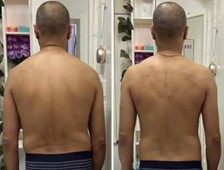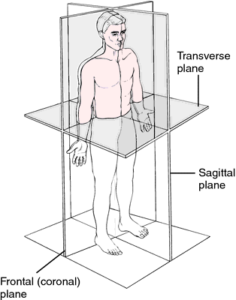Balance Acupuncture Pain management Series
* Yin and Yang balance
Morphological imbalance is the most important manifestation of the imbalance of yin and yang in the human body. The skewed shape of the human body is the root cause of various abnormal physiological functions of the human body.
Traditional Chinese medicine believes that the human body itself is an organic whole composed of multiple systems. When internal factors, external factors, and no internal factors destroy the pathological process formed by the dynamic balance of yin and yang, the overall reaction principle of “all things inside must be formed outside” will inevitably appear. , Under the action of certain internal and external factors, the function, metabolism, and morphological structure changes of a certain part are realized as the overall pathological process of damage and damage resistance!
Balance acupuncture adjusts the function, metabolism, morphological and structural changes of the imbalanced parts of the body, and uses acupuncture as a means to select certain acupoints in the human body to restore the balance imbalance to the dynamic changes of the function of restoring the balance. To stimulate and mobilize the patient’s self-defense system , rely on oneself to achieve the purpose of self-healing, self-improvement, self-regulation, self-healing disease.
*Flexible and stable
Human joints are flexible joints and stable joints alternately exist. Flexible joints are the main movement and stable joints are the main support. In normal activities of the human body, the main flexible joints have a large soft tissue mobility, which requires good muscle extension and good skin heat dissipation capacity. , once the loss of stability exceeds the limit, the joint will have obvious clinical manifestations (pain) and then lose the ability to compensate, causing a series of chain imbalances in the flexible joints before and after turning back, which is the main cause of biomechanical imbalance, said Compensation and decompensation, compensation produces pathological pain, decompensation produces symptoms (such as: various pains, high and low shoulders, long and short legs, tension and pressure, etc.)
System Balance
Balance acupuncture regulates the nervous system, including the balance of the peripheral nerves and the central nervous system, and restores the balance disorder to the dynamic changes of the function of restoring the balance, so as to achieve the purpose of self-adjustment, improvement, repair and self-healing of the body.
*Joint-by-Joint Approach
The human motion system is extremely complex. You can imagine that it is a symphony orchestra, consisting of hundreds of different types of muscles. When playing a song, these muscles have different divisions of labor but require a high degree of coordination. Some muscles are responsible for conducting , some for the solo, and some for the accompaniment.
Each joint has specific functions and characteristics. Usually, a joint responsible for stability has another joint responsible for mobility, which is to organize body movement efficiently.
Human joints usually have two functions: stability and flexibility. Stability refers to the ability of the body to maintain a normal position at rest or during movement, such as kicking a ball is the stability of the knee joint so that it does not hyperextend. Flexibility refers to the maximum range of motion that a joint can achieve during exercise. Taking kicking as an example, the more flexible the swing of the hip joint, the greater the power of the kicked ball.
One of the causes of injury, whether in athletes or the general population, is usually problems with joint stability or range of motion, which in turn lead to compensation for movement.
*Compensatory Effect
For example, when we are doing crunches, our goal is to strengthen the strength of the abdominal muscles, but the lack of mobility of the thoracic spine will affect the stability of the lumbar spine, resulting in excessive lumbar flexion and compensation, which will cause lower back pain. . The lack of mobility of our thoracic spine is due to the frequent sedentary and long-term use of mobile phones at work, the thoracic spine will become very tense, which will not only cause serious body posture problems (including chest hunchback) over time, but also affect the appearance. Function of adjacent joints (lumbar spine, scapula, shoulder joint).
With chest, round shoulders
To do a simple experiment, when you lift your arms in a hunched posture with a chest, that is, a shoulder flexion movement, the range of lift will be much different from the normal posture, and such a simple movement will be affected. , not to mention complex muscle strength training and various competitive sports such as football and basketball.
Compensation and Decompensation
- Sprinters with insufficient plantar stability are prone to inversion and valgus of the foot (Subtalar joint) during sprinting, which in turn leads to compensation of the knee joint and unnecessary horizontal displacement.
- Ankle joints need to focus on training their range of motion and flexibility. People with ankle joint injuries are accompanied by limited dorsiflexion and ankle stiffness. Likewise, insufficient ankle mobility may lead to plantar and knee compensation.
- Knee joints will benefit from improved stability. Athletes with knee pain often have insufficient knee joint stability, especially when they do squats, jumps, runs, etc., the knee is not aligned with the toes, which will greatly increase their risk of injury.
- Hip joints tend to become tense and stiff, and limited hip mobility increases the risk of lower back and knee injuries. Common low back pain is mostly caused by insufficient hip mobility. If this problem is not solved, no amount of core training can prevent and reduce low back pain.
- The lower back (lumbar spine) needs stability, however, our lower back is often destabilized, (note: the lumbar spine is not in a neutral position, such as the pelvis forward and backward), which can lead to body compensation, muscle stiffness, power output decrease, and even pain. A lot of plank, sit-up exercises won’t necessarily give you a stable lower back, know that strength doesn’t equate to stability, but stability can help you improve your strength.
- The upper back (thoracic spine) needs range of motion. This area (the thorax) encloses the vital organs of the body and is inherently very stable. For most office workers, the thoracic spine becomes excessively tense and stiff due to sitting in front of the computer all day and playing with mobile phones. Maintaining this position for long periods of time will also limit your ability to perform some advanced exercises such as overhead squats, snatch, and press, while increasing the risk of subacromial impingement syndrome and other shoulder injuries.
Choose our balance acupuncture treatment, through acupuncture on certain acupoints of the human body, rely on the self-defense system to self-repair and self-regulate, and restore balance to the imbalance. Restore healthy form.


Indications and range of treatment:
*All kinds of pain (except pain caused by the internal organs):
- iPhone Neck
- Cervical Spondylosis,
- Neck Pain
- Shoulder Pain,
- Low back pain
- Legs pain
- Knee pain
- Sports injury
- Dizziness
- Migraine
- Stress
针灸/ Acupuncture – $100 (45mins)
Initial consultation – $30 (Free)
Cupping – $45 (Free)
Massage (5分钟) – $15 (Free)
整个治疗过程 60分钟
初次收费:$120 / Initial $120
再次收费:$100 / Second $100






